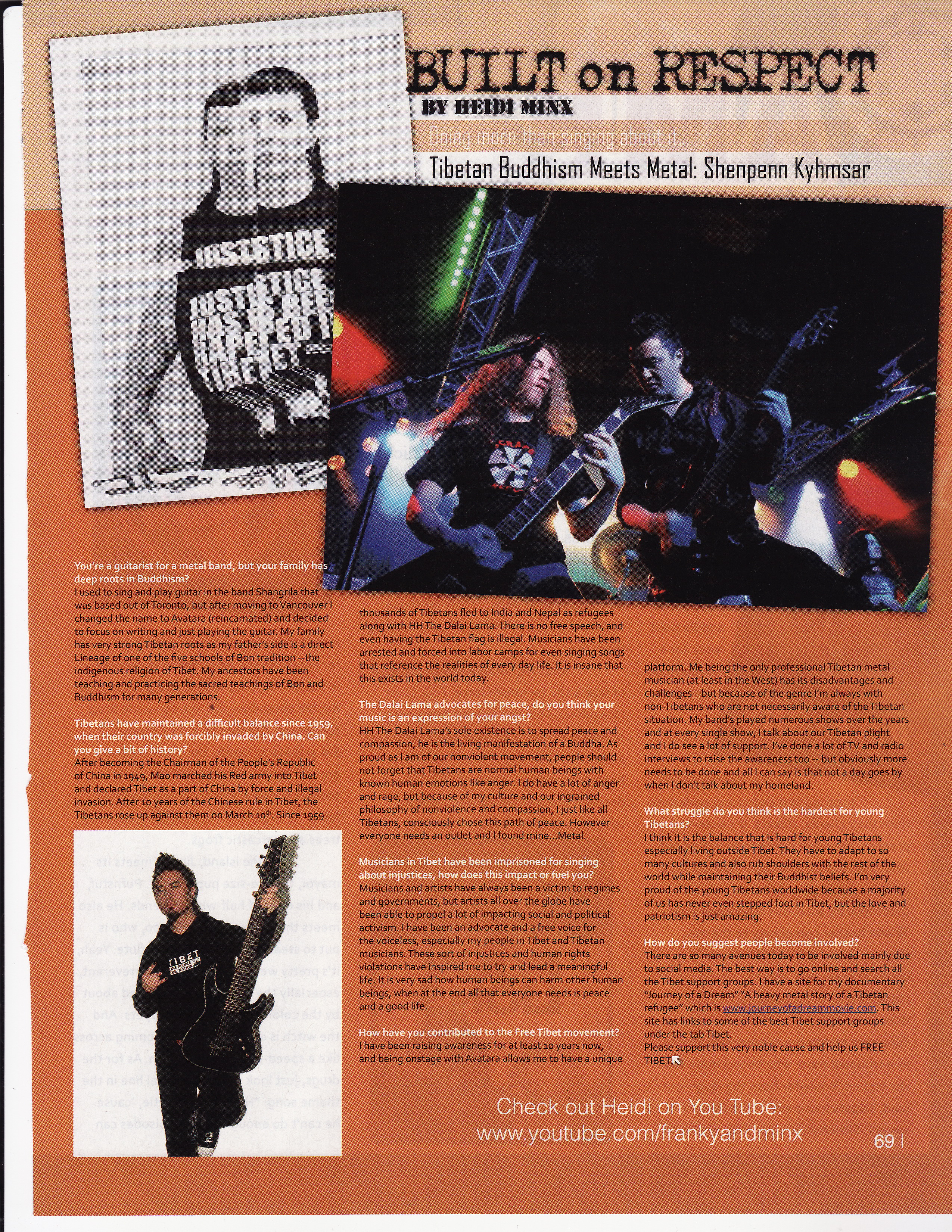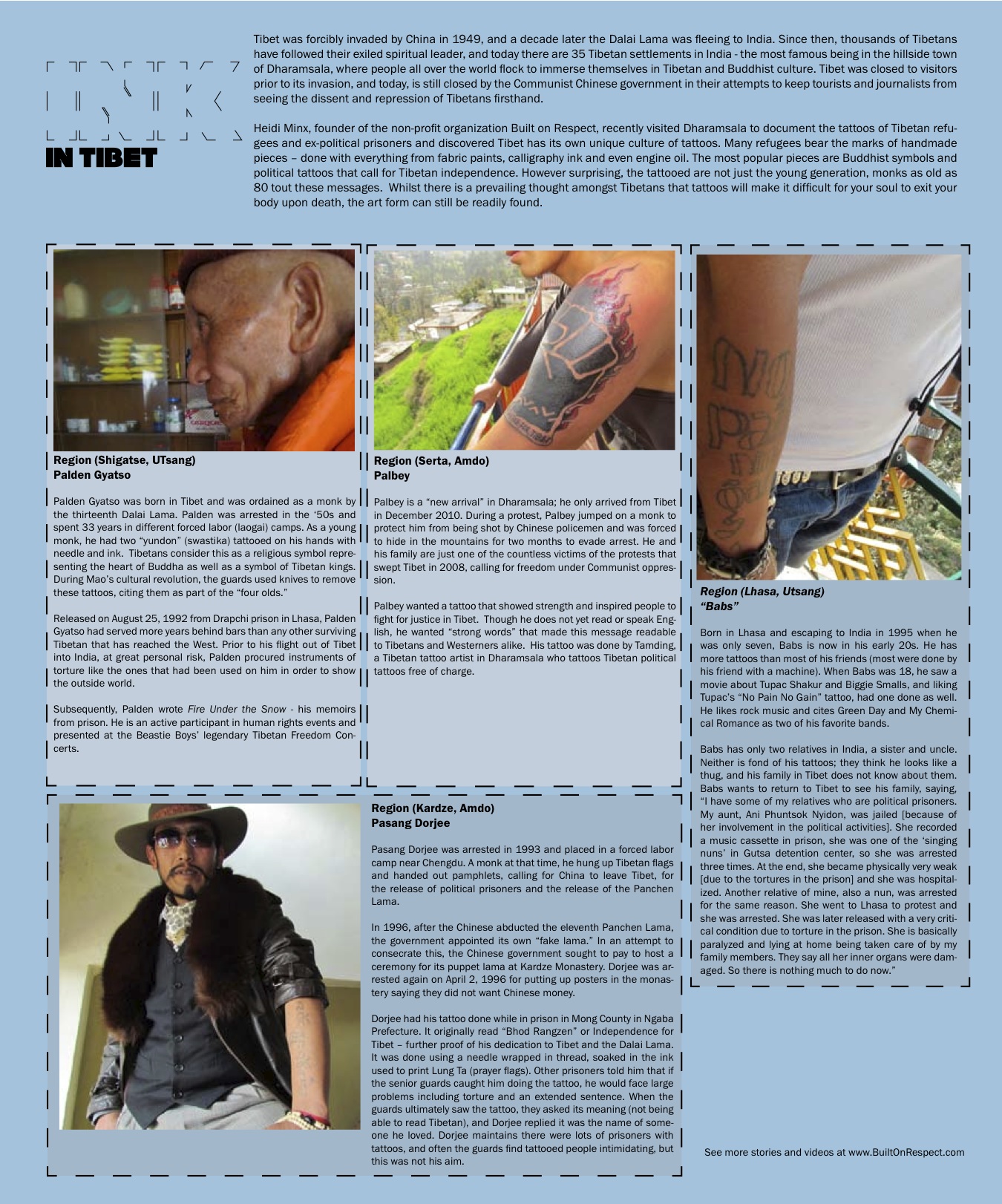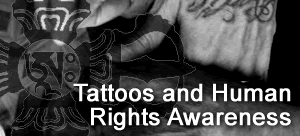Tattoos of Tibetan Refugees: Tsetan

Tsetan is 35; he was born in Eastern Kham. He studied in a monastery for several years before coming to India; it was his hope to receive a more thorough education at the monastery in Southern India. His initial walk from his monastery to the capitol city of Lhasa took 15 days to walk, after finding a guide; it was a 13-day walk to the reception center in Nepal.
Tsetan has several tattoos; they were done in his monastery in Tibet when he was only 17. He did his tattoos himself, using a needle and calligraphy ink. On his right hand, he has a dove, he did this together with two of his other friends; they did it to symbolize peace.
On his left forearm he has ‘Oh Ah Hum’ in Tibetan letters (meaning: Body, Speech, Mind and often used in meditation). He said, “There are so many Chinese people in Tibet, I did this so everyone knows I am Tibetan.”
His left forearm also bears a sword, the symbol of Manjushri (Buddha of Wisdom). In Tibetan culture, young children are encouraged to say the mantra of Manjushri everyday; this repetition is meant to make the child clever, and a good student. Tsetan’s uncle encouraged him to say this as a child, but he said he was lazy, and could not always remember to say it. This tattoo is his daily reminder.
His left hand has a snake on it, both he and his father were born in the Tibetan year of the snake, and he says this is a daily remembrance of his father, who he has not been able to see for 18 years.
His family and some people think his tattoos are not good, but he never experienced any serious problems because of them.
















